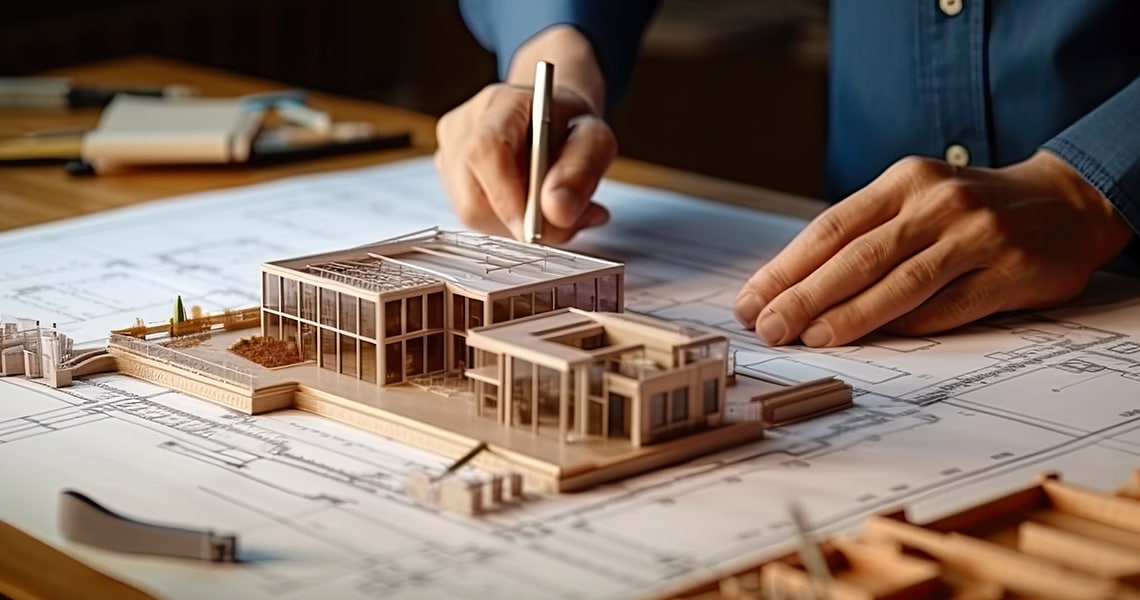Explore Award-Winning Projects by Popular CDA Architects
The Influence of Technological Developments on the Style Practices of Contemporary Architects
The rapid development of technical devices has substantially improved the design landscape for contemporary designers, fostering unprecedented levels of advancement and sustainability. Checking out these characteristics exposes a nuanced interplay between technology and conventional layout approaches, motivating a closer assessment of what the future holds for architectural methods.
Evolution of Architectural Equipment
Exactly how have architectural tools changed the design and construction procedures over the centuries? The evolution of building tools has dramatically influenced the effectiveness, accuracy, and creative thinking of layout and building.
With the development of the Renaissance, the intro of the compass and the protractor marked an essential shift. These tools allowed engineers to achieve higher accuracy in their styles, assisting in the development of even more detailed and proportional structures. The Industrial Change even more transformed building practice with the introduction of mechanized tools and products, permitting for bigger and a lot more ambitious tasks.
In the 20th century, the development of computer-aided style (CAD) software program changed the landscape once again, supplying designers with extraordinary capabilities in modeling and visualization. Today, progressed tools such as Building Information Modeling (BIM) and parametric layout software remain to press the borders of architectural technology, making it possible for a much more incorporated technique to design and building procedures.
Improved Collaboration in Design
As innovation remains to advance, enhanced cooperation in design has actually become a keystone of modern-day building method. The combination of digital tools such as Structure Information Modeling (BIM), cloud-based platforms, and advanced visualization software application has changed the way designers, engineers, and stakeholders engage throughout the design process. These tools help with real-time communication, allowing teams to share ideas, adjustments, and comments instantly, despite geographical area.

Additionally, interdisciplinary partnership has actually been streamlined through these technical developments, enabling engineers to work much more very closely with various other experts, such as urban coordinators and environmental consultants. The result is an extra natural method to make that thinks about different viewpoints and experience. Eventually, enhanced collaboration in style is not simply a trend; it is vital for producing innovative, useful, and visually pleasing architecture in an increasingly complex world.

Sustainability Through Innovation
Sustainability in design has progressively ended up being linked with technical innovation, driving the industry towards eco accountable methods. Contemporary architects are leveraging sophisticated modern technologies to decrease ecological influence while boosting the performance of buildings. cda architects. One noticeable example is using Structure Details Modeling (BIM), which permits for exact preparation and source allotment, reducing waste during building and promoting energy performance throughout a structure's lifecycle
In addition, wise materials and energy-efficient systems are being incorporated into designs to enhance resource usage. Technologies such as solar batteries and environment-friendly roof harness sustainable energy sources, contributing to minimized carbon impacts. Additionally, the application of expert system in design processes makes it possible for engineers to mimic and analyze power consumption, directing choices toward more lasting end results.
The integration of sustainable modern technologies not just straightens with worldwide environmental objectives but More about the author likewise fulfills an enhancing demand from consumers for environmentally friendly services. As architects embrace these innovations, the emphasis shifts in the direction of creating areas that are not just cosmetically pleasing however also functionally lasting, thus redefining the criteria of contemporary architecture. By doing this, innovation acts as a catalyst for sustainability, enabling engineers to design structures that respect and enhance the natural environment.
Challenges in Execution
While technological improvements in style hold wonderful assurance for enhancing sustainability, their implementation commonly encounters significant challenges. One key barrier is the high learning contour linked with new innovations. Architects and building experts may require considerable training to properly make use of innovative software application and check here devices, which can delay project timelines and increase expenses.
Furthermore, the integration of arising innovations, such as Structure Information Modeling (BIM) and lasting products, usually requires collaboration throughout multidisciplinary groups. This partnership can be prevented by differences in competence, operations, and interaction styles, causing potential disputes and ineffectiveness.

Furthermore, governing frameworks and building regulations may not maintain speed with technological advancements, producing uncertainty and potential conformity issues. This obstacle can prevent designers from completely accepting new innovations, as the danger of non-compliance might surpass the advantages. Attending to these application challenges is crucial for the successful integration of technological improvements in modern building methods.
Future Fads in Design
The challenges associated with the implementation of new technologies in architecture have prompted a reevaluation of future trends within the sector - cda architects. As architects navigate issues such as sustainability, urbanization, and social his response equity, they are significantly adopting ingenious technologies to improve style performance and ecological efficiency
One prominent fad is the combination of man-made intelligence (AI) in the style process. AI devices can examine large datasets to notify design choices, boosting both creative thinking and functionality. Structure Information Modeling (BIM) proceeds to develop, allowing real-time partnership among stakeholders and assisting in streamlined job administration.
Lasting design techniques are also getting momentum, with engineers concentrating on adaptive reuse and regenerative layout principles that minimize resource usage and waste. The unification of clever products and sustainable power resources will certainly better enhance the durability of buildings despite environment change.
In addition, the increase of parametric layout permits for even more individualized and context-sensitive architectural services (cda architects). By harnessing these advancements, architects are positioned to produce developed environments that not just address the instant requirements of society yet likewise expect future obstacles, therefore redefining the duty of architecture in an ever-changing world
Verdict
Technical innovations have substantially reshaped architectural design methods, assisting in enhanced accuracy, partnership, and sustainability. The combination of devices such as Structure Info Modeling and parametric layout software, together with fabricated knowledge and smart materials, empowers designers to attend to intricate challenges much more efficiently.